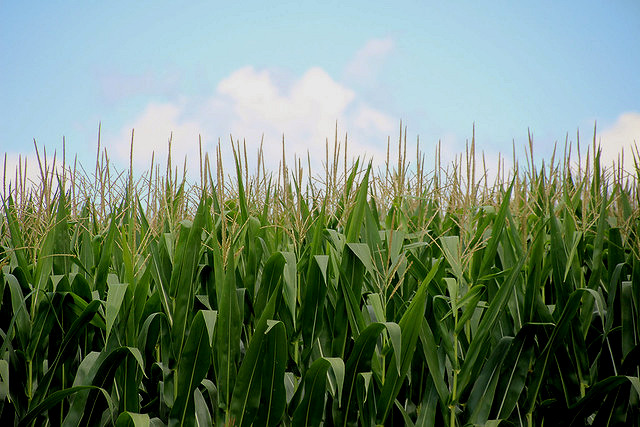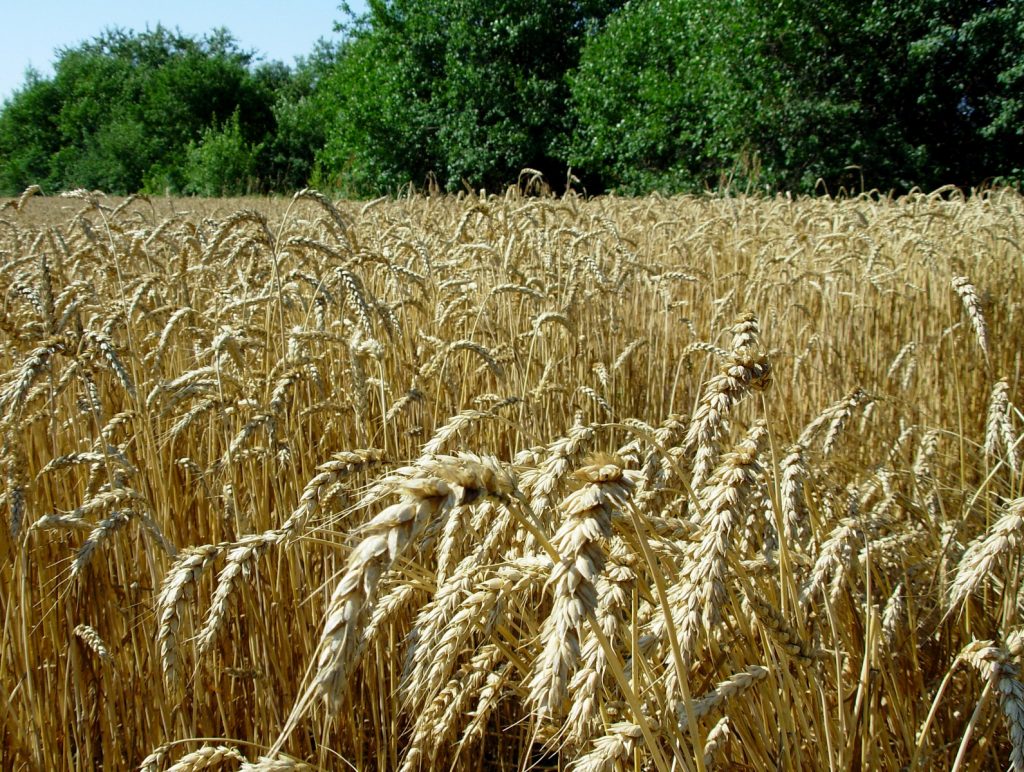Prince Edward County, Ontario, Canada
Industrialization of Small Family Farms
The Industrialization of Small Family Farms after WW II In Iowa
by Myrna Wood Picton, Ontario
I was in Grade 11 when I detasseled corn and made $400. It was in the early Fifties when the hybrid corn industry hit my county in the centre of Iowa. The large seed companies such as DeKalb and Pioneer moved into the rural areas recruiting farmers to grow these new varieties of seed corn. The corn seeds were being developed to sell around the world in differing climates and conditions and bring in huge new profits for the seed companies. The farmer was in effect renting out his land and labour for the growing season to the company. He was forced to follow a strict regime of doing everything by the company’s rules and schedule: planting, fertilizing with the new chemicals developed as weapons during WWII, and harvesting. If a farmer deviated from the company’s rules he would be fined. If the crop was not harvested on time crews of Mexican workers would be brought in to do the job at his expense.

One variety of corn was planted in six rows, leaving room for 2 rows of another variety of seed to be planted 2 weeks later. In the heat of high summer, the 6 rows of ‘female’ corn would start to produce tassels which when dried, shed pollen down on the silks of the ears fertilizing the corn kernels. Those tassels had to be removed immediately before drying in order for the two rows of the later variety of corn, ‘male or bull’ corn, to produce its tassels and spread its pollen across the ears of the 6 rows. Thus, two varieties of corn were manually joined to produce a new variety that would withstand, say, shorter growing seasons, or dryer conditions of different areas of the world. The job entailed getting to the field early enough that as the sun and breezes began to dry the tassels you were there to pull them out and stop the pollen from being dispersed. The edges of corn leaves are serrated and sliced your skin unless it was covered well.
As the heat built up during the morning the air would be stifling among the corn rows. In the afternoon you could go home to rest in order to get up early and start all over the next day as more tassels developed. This continued for four or five weeks until all the corn tassels had been destroyed. As I remember I had contracted for 3 acres for my $400 payment. Stronger people or family groups would contract for 5 or 10 acres in order to make a viable wage for school expenses or family needs. When we consider the company’s expenses for the farm and the farmer and the detasseling and harvesting we can imagine the profits taken by the company’s sales into new territories where corn had not been grown before. In fact, when I moved to Canada in the fall of 1959, I noticed the absence of corn in the fields. It was only during the 1960s that the new varieties of corn were being grown across Canada which had a shorter growing season for heat-loving corn. Even today, where I live in a farming region, I pass by DeKalb signs in many summer fields.

During the 1930s, practically all the farms in my County had been subsistence farming plus whatever excess crops could be sold on the market. Every farm had one or more cows for milk and cream sales, at least one hog for meat, and chickens for eggs and meat. Women sold eggs, chickens, feathers, milk and cream. They canned all the vegetables and fruits for winter. They made sausages and preserved hams. A co-op town freezer was built to keep the meat from each farm’s animal harvest. Corn and oats became the crops to sell in the new industrial agriculture system after the depression and droughts of the Thirties. After the U.S. entered the Second World War in 1941 many farms also grew hemp and a hemp mill was started on the edge of town to make rope. Italian prisoners of war were brought to work in the mill while German prisoners worked as farm labourers. Many farms had still used horsepower until the government forced the banks to provide farmers with enough capital to buy tractors at low cost for the war effort. My father’s trade of breeding and training work horses disappeared almost overnight.